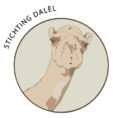
The Camel & The Bedouin
An almost extinct two-unity
Author Fred Ros, conservator Museum for Ethnology (The Netherlands)
When we Dutch people think of a camel, we also imagine an Arab. When we think of an Arab, the image of deserts and camels is looming. Although there are tribes of Arabs who would rather have nothing to do with the camel and despise the desert, this image has been deeply engraved in the memories of our ancestors and therefore ours, since time immemorial. This stereotype did not just fall from the sky, but goes back to an existing and very old cultural pattern that has profoundly influenced an old civilization and still leaves its mark.
What is it about? First two things. In this context, camel means the Camelus dromedarius. The word camel comes from the Arabic djamal or gamal, which means specifically the dromedary. And now the Bedouin. This word has its origin in the Arabic word badu or bedu – tribes living in the desert. In addition to the badu, the Arabs have the hadára – the civilized world of farmers and townspeople. Some dialect of peasants from outside made baduwine a plural of badu, ‘those who live in the desert’.
This plural became a singular in our language: one Bedouin.
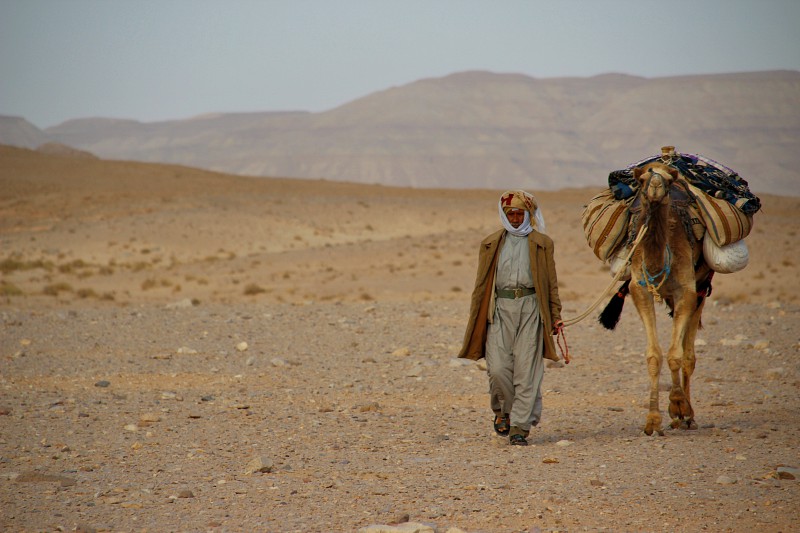
The life of a Bedouin was hard. He had to be resistant to extreme heat and cold and sometimes to hunger and thirst. He had to have a lot of endurance and perseverance and alertness and combativeness, because something could always go wrong or danger loomed. These traits were considered special virtues of the Bedouin. In addition, life was made more difficult by disputes over pastures and water sources, cattle thefts and passage through other people’s tribal areas. This life was only possible within a tribal context. A family that was excluded could only save itself from destruction by being adopted by another tribe. Although they were saved, they never became a full member of the new tribe and remained outcasts.
Since Bedouins were constantly forced to move to new pastures, their possessions were kept to a minimum. Well-being was hard to measure by the interior of the tent. Prosperity was visible in the size and quality of the herd. Wealth existed in property ownership in villages along the edge of the desert or even in cities. But in the way of life that the Bedouins had chosen for themselves, there was little room for luxury and appearance. Sobriety prevailed.
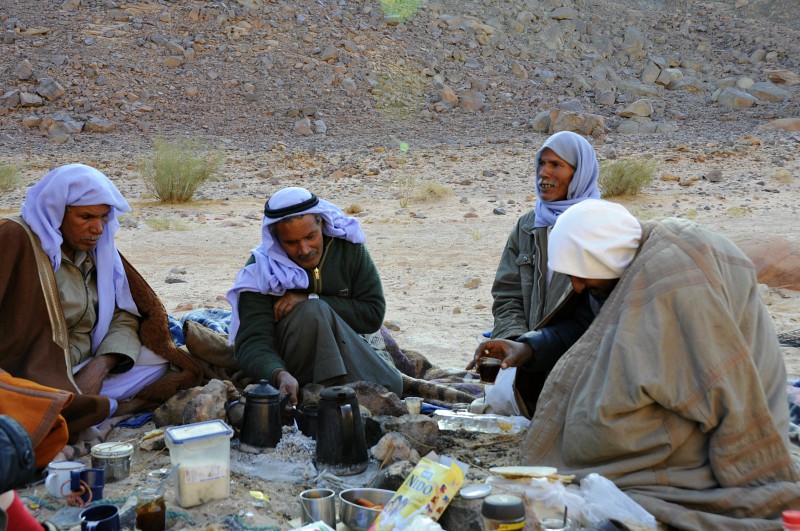
Yet the Bedouin contribution to the predominant Arab-Islamic culture has been great: the various superior camel breeds, the Arabian horse, a magnificent hunting dog – the Saluqi – and, the most cross-cultural of all of these, the finesses of hunting with falcons.
Their greatest cultural contribution lay in the intangible: their own spoken language. Language-loving, gifted and cultured, they elevated Arabic to a means of communication and constructed language that, together with written Arabic, grew into a global language.
The situation in which one only possesses a few belongings, has led the Bedouins to put all their talents into language proficiency, eloquence, storytelling, rhyming prose, poetry, song and dance. Poems were not reclaimed but recited or sung.
It is this language of the Bedouin from the 6th century and earlier that some time after the emergence of Islam, at the beginning of the 7th century, formed the basis of classical Arabic, much more than the language of the Quran.
The Arabic of the Bedouin was considered to be the purest Arabic to which one looked. This esteem was so high that even princes in distant Spain were sent to Arabia for one or two years to perfect their mastery of the language.
In the pre-Islamic period, every tribe had a poet who sang the virtues of his own tribe. He was a sort of propagandist and a PR man. One form of poetry was very popular, the qasida. The qasida consists of 60 to more than 100 lines of poetry that all have the same rhyme.
The poet had a choice of 22 different poetic metres, from a simple to a very complex one. The flexibility and aural richness of Arabic can be most appreciated in the qasida. That is why this poetic form is still being practiced even now. A number of themes also had to be addressed in the qasida. One of these themes that one regularly finds in it is the description of the poet’s mount, usually his camel. But camels are also mentioned elsewhere in such poems. There is probably no other animal than the camel that has been sung about so many times over the centuries. It is a sign of how much the Arab felt connected to the camel. This bond goes beyond daily reality.
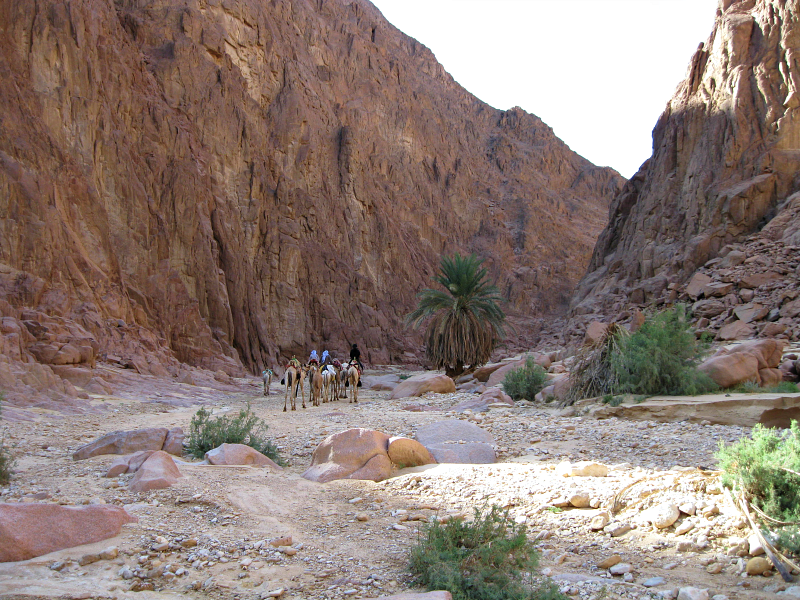
Ata’ Allah – Gift from Allah
Name given to the Camel by the Bedouin
The decline of Bedouinism started at the beginning of the 16th century when the Turks subjugated the Arab lands and Arabic was relegated by the Turks to second place.
The Bedouin tribes remained (semi) autonomous from the Ottoman sultan. The cities and the countryside came under Ottoman rule. In the past, badu and hadára were still somewhat of a unity, now a centuries-long separation occurred. After the fall of the Ottoman Empire, there was actually no room for Bedouin in the new Arab states that were formed to Western model. These new nation states preferred settled and controllable citizens. Settlement programs were implemented, some of which even by force. The economic importance of the Bedouin decreased because the camel came to be displaced by cars and trucks. This process is on-going. It will not be long before the camels are only bred for the many camel races. The annually recurring royal races in Saudi Arabia with upwards of more than 2000 participants are probably the most famous.
But now that the desert is so much emptier and can be irrigated, it is more convenient to breed camels on ranches.
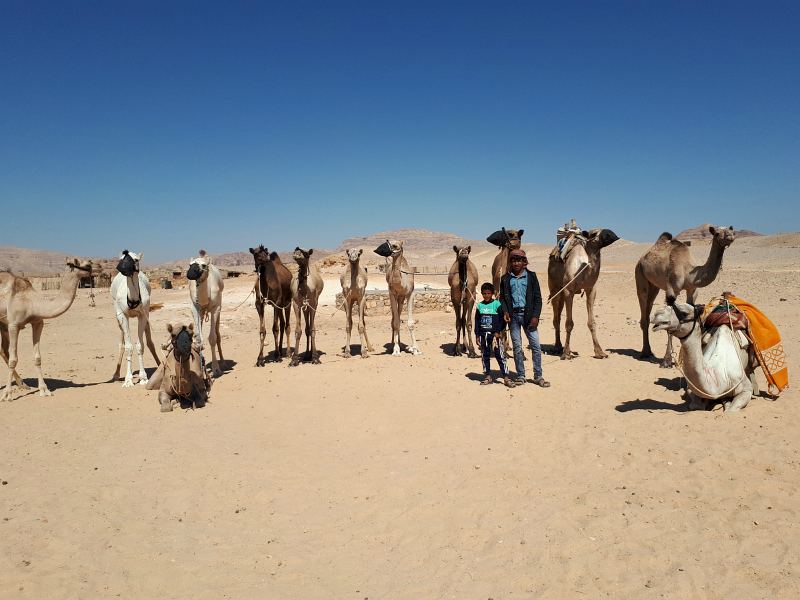
The symbiosis of Bedouin – Camel was already mentioned in the 11th century BC. History teaches us that Bedouin who settle, nevertheless tend to return to the desert. Will it happen again this time?
Who knows. After all, prosperity and comfort do exert a great attraction.
‘Het Fenomeen Kameel’ – Publication by the Natuur Museum in Rotterdam
Visual material & Quote: © Dalèl Foundation
